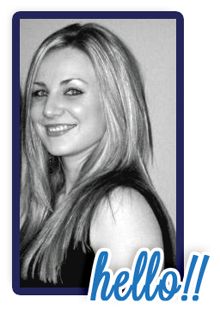 It has
always been a goal of mine to open up my own Reggio Emilia learning center. It
was not until this program that I realized the importance of the visual and
material environment and the unconscious messages that they may convey.
Derman-Sparks & Olsen Edwards (2010) state that “The toys, materials, and
equipment you put out for children; the posters, pictures, and art objects you
hang on the wall; and the types of furniture and how you arrange them all
influence what children learn. An environment rich in anti-bias materials
invites exploration and discovery and supports children’s play and
conversations in both emergent and planned activities” (p.43).
It has
always been a goal of mine to open up my own Reggio Emilia learning center. It
was not until this program that I realized the importance of the visual and
material environment and the unconscious messages that they may convey.
Derman-Sparks & Olsen Edwards (2010) state that “The toys, materials, and
equipment you put out for children; the posters, pictures, and art objects you
hang on the wall; and the types of furniture and how you arrange them all
influence what children learn. An environment rich in anti-bias materials
invites exploration and discovery and supports children’s play and
conversations in both emergent and planned activities” (p.43). As an anti-bias educator I want
to ensure that my classroom adheres to the needs of each of my students as
individuals. “When children do not see families like their own portrayed in
books and play materials and elsewhere in the program, and when their home
language is not supported, they can internalize a message that the program
thinks there is something unimportant or wrong about their family and therefore
about them” (Derman-Sparks & Olsen Edwards, 2010, p.58). Furthermore, this
program has taught me the importance of collaborating and creating partnerships
with families. With that in mind, I really appreciate the way in which Adriana
put a great deal of thought into her interaction with parents and the way in
which she made them feel welcome. She had a sign in station with information
and photos about the center and encouraged family participation along with an “open
door” policy (Laureate Education, 2011). It was evident that Adriana knew the
students in her care and the family members. She had a special area that
allowed each family to share their culture. For example, one family brought in
a collage of pictures and each month a different family would be invited to share
who they are and where they come from with the class (Laureate Education,
2011).
As an anti-bias educator I want
to ensure that my classroom adheres to the needs of each of my students as
individuals. “When children do not see families like their own portrayed in
books and play materials and elsewhere in the program, and when their home
language is not supported, they can internalize a message that the program
thinks there is something unimportant or wrong about their family and therefore
about them” (Derman-Sparks & Olsen Edwards, 2010, p.58). Furthermore, this
program has taught me the importance of collaborating and creating partnerships
with families. With that in mind, I really appreciate the way in which Adriana
put a great deal of thought into her interaction with parents and the way in
which she made them feel welcome. She had a sign in station with information
and photos about the center and encouraged family participation along with an “open
door” policy (Laureate Education, 2011). It was evident that Adriana knew the
students in her care and the family members. She had a special area that
allowed each family to share their culture. For example, one family brought in
a collage of pictures and each month a different family would be invited to share
who they are and where they come from with the class (Laureate Education,
2011). With regards to materials, I
would want to ensure that poster choices, books etc. depict a wide range of
cultures so that every child can see his or herself depicted in the classroom. I
think that it is also important to note that even children’s cultures who are
not part of the student body should still be represented to celebrate the
diverse world we live in. I grew up in a very small town and had little to no
experience with many different cultures until moving to a larger city center. “Creating
and assessing your learning environment is an ongoing process. Your materials
will need to change over time to reflect each new group of children and
families” (Derman-Sparks & Olsen Edwards, 2010, p.44).
With regards to materials, I
would want to ensure that poster choices, books etc. depict a wide range of
cultures so that every child can see his or herself depicted in the classroom. I
think that it is also important to note that even children’s cultures who are
not part of the student body should still be represented to celebrate the
diverse world we live in. I grew up in a very small town and had little to no
experience with many different cultures until moving to a larger city center. “Creating
and assessing your learning environment is an ongoing process. Your materials
will need to change over time to reflect each new group of children and
families” (Derman-Sparks & Olsen Edwards, 2010, p.44).
I would ensure that my classroom environment
accurately and nonstereotypically reflects all children, families, and staff
members within their daily lives. I would also ensure that children and adults
from various racial and ethnic identities and groups within the community,
families from a range of economic groups and even cultures not present in the community
are all accounted for and fairly represented. People will disabilities of
various backgrounds and diverse family structures would also all need to be
represented in order to have a classroom that is truly diverse (Derman-Sparks & Olsen Edwards, 2010, p.43).
References:
Derman-Sparks, L., & Olsen Edwards, J. (2010). Anti-bias
education for young children and ourselves. (pp.32-52). Washington, DC: NAEYC
Laureate Education, Inc. (2011). Strategies for working with
diverse children: Building on children’s strengths. Baltimore, MD: Author



.jpg)





2 comments:
HI Rhiannon
Great Post! I like your ideas of incorporating various cultures in your program. This is essential so that the children can learn to respect and appreciate their own culture, that of their peers as well as that of the wider community. Likewise it is pivotal that we build partnerships with our families and having an 'open door' policy is one of the great ways in which we would forge these relations/partnerships.
I love the Reggio approach. My 3 year old son (Luke) goes to a Reggio school and I am very happy with it. I think that this approach lends itself to anti-bias education very well. Luke's classroom is very inviting. It uses real items instead of plastic toys and the family culture is represented (ex. there is a framed picture of every child's family on the shelf tops). They did a map study and located where every child lived in the city, drew maps of the classroom, school, and community. I feel that the teachers really understand the students and work to incorporate their interests and strengths. Luke is seriously a dinosaur expert so dinosaur books were added to the science area and Luke was asked to help pronounce the names which made him feel very proud. I think it's great that you reminded us to include cultures from outside the classroom and around the world because "what children do not see in the classroom teaches children as much as what they do see" (Derman-Sparks & Olsen Edwards, 2010, p. 43).
Reference
Derman-Sparks, L., & Olsen Edwards, J. (2010). Anti-bias education for young children and ourselves. Washington, D.C.: National Association for the Education of Young Children (NAEYC).
Post a Comment